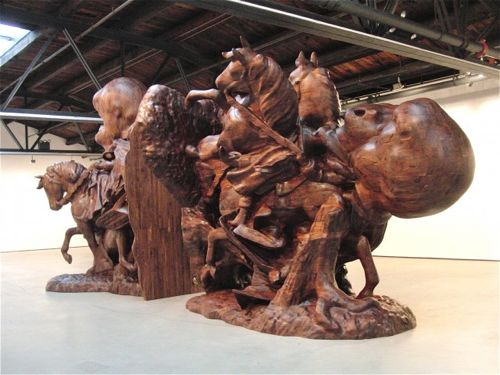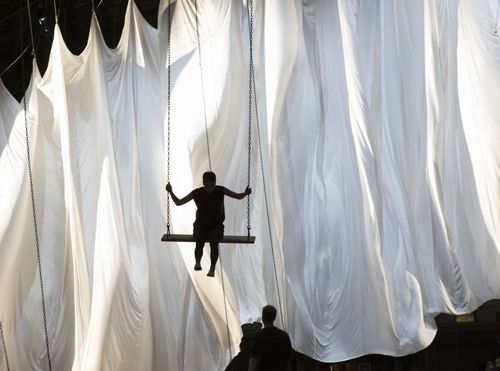Teaching about scale and its importance in a work of art is a tricky thing for art educators. Let’s face it: most teachers with 25 or 30 kids in the room are often not creating much large-scale work, even life-size work, unless its modular (where each student only “owns” a piece of the whole). Students rarely see large-scale works in person and only if they are lucky see them on a computer screen.
At the same time it can’t be ignored that so much of contemporary art incorporates scale as an integral part of the work. I think about some recent blockbusters (literally) by Paul McCarthy, Ann Hamilton and even El Anatsui, and have come to realize that my students are really intrigued by these kinds of works and simultaneously assume that they are basically created by and for rich people. Complicating the matter further, there always seems to be a steady stream of large-scale work- bizarre inflatables and underwhelming waterfalls, for example- that seem to use scale as a crutch for some other deficiencies in the piece. How can teachers meaningfully and effectively teach about this aspect of contemporary art and still make it relevant in a classroom context?
One of the approaches I’ve been thinking about is teaching with the question, “How does scale matter in the work?” If we can get students to think more about how size matters, or doesn’t, then we get the ball rolling when it comes to thinking about how it can take ideas further and not just be a way to get in the viewer’s face.
Once students get used to thinking about scale when engaging with works of art then they can also begin to take on different assignments where the reasons and meanings behind the choice of scale are carefully considered. Students can specifically be asked, for example, to experiment with how forming the same idea/composition in two very different sizes can affect how the work is perceived. They can also team up with others to design works where scale—large or small—communicates specific things.
More and more I am realizing that teaching about scale requires being very specific about the images we look at with students. When engaging directly with works of art it also requires us to ask good questions in order to highlight how the size of things makes a difference.





